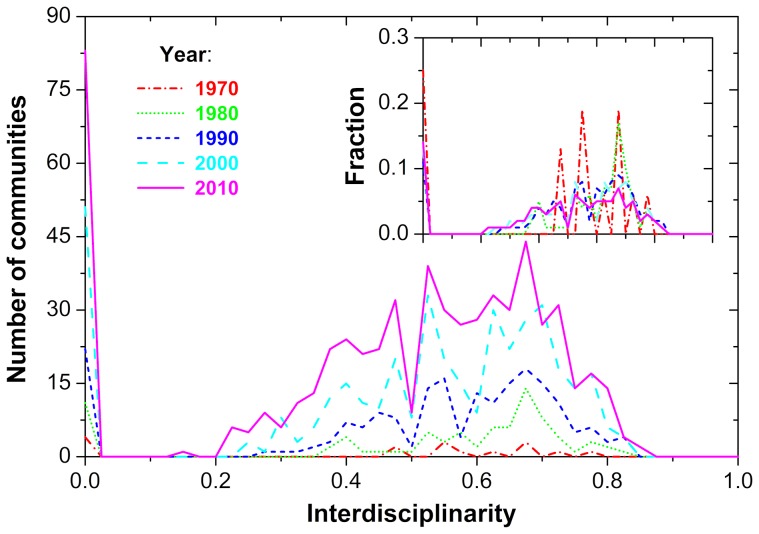Figure 4. Evolution of the distribution of interdisciplinarity within the communities of Slovenia's coauthorship network, as determined by the COPRA algorithm.
The main panel depicts the number of communities with a given interdisciplinarity  , while the inset shows the relative fraction of the communities with a given
, while the inset shows the relative fraction of the communities with a given  . It can be observed that, regardless of the decade (see figure legend), the majority of communities contain researchers that all work in the same field (
. It can be observed that, regardless of the decade (see figure legend), the majority of communities contain researchers that all work in the same field ( , see also panel A of Fig. 1). The sharp peak at
, see also panel A of Fig. 1). The sharp peak at  is followed by a relatively broad distribution spanning
is followed by a relatively broad distribution spanning  , with a maximum (fitted, not shown) at approximately
, with a maximum (fitted, not shown) at approximately  . This indicates that there are also communities within which researchers work on different field of research, i.e., interdisciplinary communities, but the relative fraction of those changed very little over the years (see inset). Thus, despite ample efforts to promote interdisciplinary research, we arrive at the sobering conclusion that, relatively, the landscape of Slovenia's interdisciplinary research has changed little during the past 50 years. On the up side, we may also conclude that the number of interdisciplinary communities grows proportionally with the total number of communities (which could be interpreted as a positive development), yet the desired global shift towards interdisciplinarity is certainly absent. Other community detection algorithms yield qualitatively similar results.
. This indicates that there are also communities within which researchers work on different field of research, i.e., interdisciplinary communities, but the relative fraction of those changed very little over the years (see inset). Thus, despite ample efforts to promote interdisciplinary research, we arrive at the sobering conclusion that, relatively, the landscape of Slovenia's interdisciplinary research has changed little during the past 50 years. On the up side, we may also conclude that the number of interdisciplinary communities grows proportionally with the total number of communities (which could be interpreted as a positive development), yet the desired global shift towards interdisciplinarity is certainly absent. Other community detection algorithms yield qualitatively similar results.

